addo
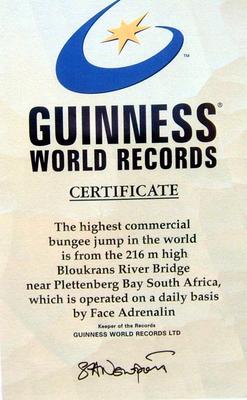
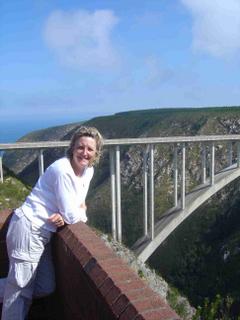 The route to Addo from our house is straight up the N2 and along the world famous garden route. There is plenty to see along the way, but none so spectacular as the worlds highest commercial bungee jump. A staggering 216 meters from the road bridge to the river below.
The route to Addo from our house is straight up the N2 and along the world famous garden route. There is plenty to see along the way, but none so spectacular as the worlds highest commercial bungee jump. A staggering 216 meters from the road bridge to the river below.Addo Elephant National Park, which is situated approximately one hour's drive inland from Port Elizabeth, in the Eastern Cape Province of South Africa, is home to a population of more than 340 elephants. These animals are all descendents of
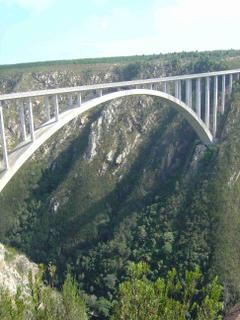 just a handful of individuals who survived an attempt in the early 1900s to wipe out the entire Eastern Cape elephant population.
just a handful of individuals who survived an attempt in the early 1900s to wipe out the entire Eastern Cape elephant population.We spotted a van parked outside the bungee jump base, its purpose there was unsure, but it didn't fill us with confidence and could hardly be called an advertisment.
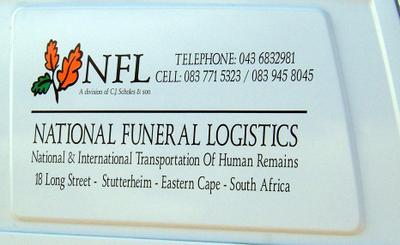
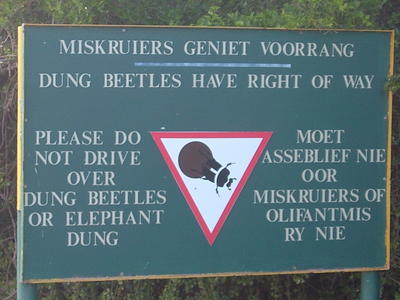
In 1900, this elephant population was the largest surviving stronghold of elephants in South Africa. Elsewhere hunting had decimated populations but, due to the impenetrable nature of the Addo bush, the elephants of the Eastern Cape survived this onslaught. However, the development of agriculture in this area inevitably led to conflicts between the Addo elephants and the farmers, and before long the farming community decidedtheir elephant neighbours were unacceptable pests. As a result, a professional hunter, Major P.J.Pretorius, was hired to exterminate the animals, and between July 1919 and August 1920 he killed about 120 elephants in the area. Fortunately this slaughter was halted before the task was completed, and in 1931 Addo Elephant National Park was created to provide protection for the 11 surviving elephants.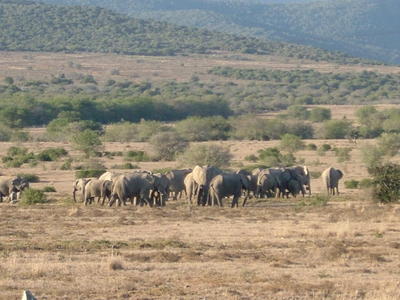
The recovery of the Addo elephant population from the brink of extinction appears to have been a great success. But, what does the future hold for the elephants of Addo, and is their survival really secure? A research programme looking at the conservation biology of the Addo elephants was initiated in 1996. Careful examination of the population's history and current status are used to address questions concerning the population's possible future prospects.
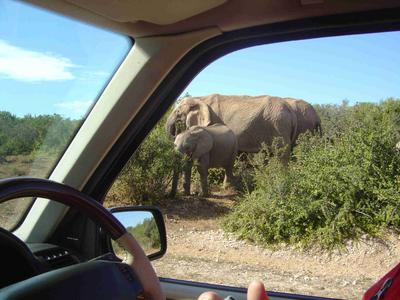
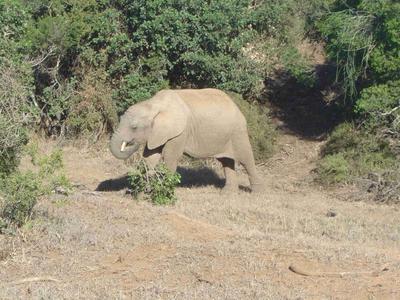
A key component of this project involved getting to know every elephant in the population. Elephants can be recognised by looking at the notches and holes in their ears (which are caused by the ears being torn in the bush or during fights), the size, shape and configuration of their tusks, and the patterns of wrinkles on their face and blood vessels in their ears.
Photographic identification files of the Addo population have been compiled, containing photographs of the right and left side of every individual who is more than six years old (calves can most easily be recognised by their association with their mother).
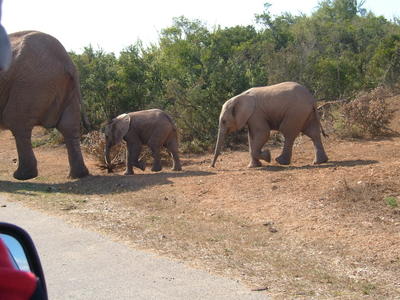
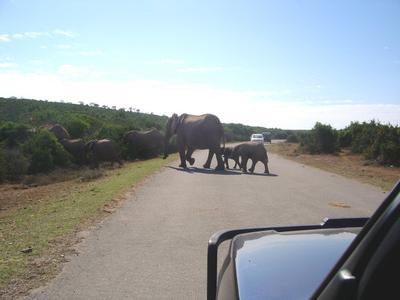
The complete history of the elephant population since the creation of the park was then reconstructed by tracing individual elephants' life histories using photographic records studied in conjunction with all available written reports. Individual elephants can be identified in photographs taken throughout their lives by studying their vein and wrinkle patterns which, like a human finger-print, are unique for each animal and do not change as the animal grows older. The dates of birth and death of every elephant in the Addo population were estimated, and maternal family trees dating from 1931 to the present were compiled. The result is a unique data set, spanning 70 years, and enabling in-depth demographic analyses of the population's growth and recovery.
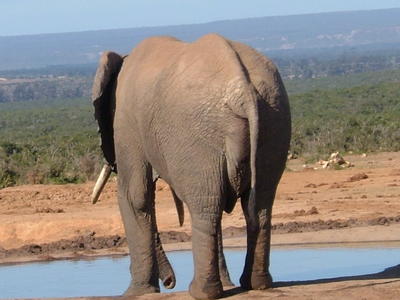
One of the key factors facilitating the population's recovery was the fencing of the park in 1954. Prior to this, the elephants continued to roam outside their protected area, resulting in fatal conflicts with local farmers. As a result, population mortality was high, and the growth rate minimal. The secure fencing of the park immediately reduced mortality rates, enabling an increase in population growth. Between 1931 and 1954, the elephant population increased from 11 animals to just 22. Since the fencing of the park, the population has increased more than 15-fold, to its current size of over 340 elephants.
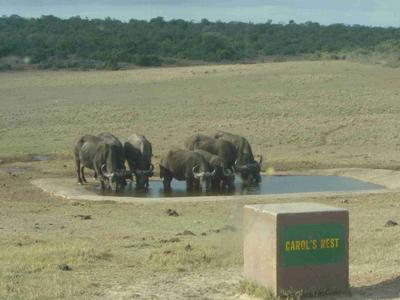
Buffalo and Zebra drink at one of Addo'd watering holes, this one was called 'Carol's Rest'
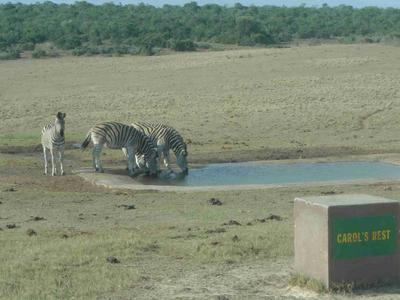
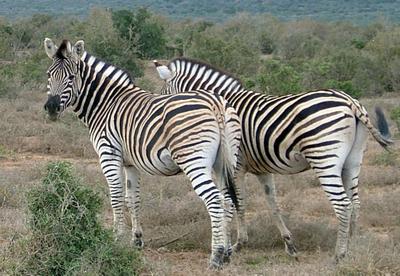
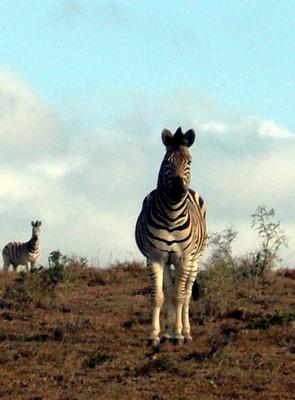
Although the fencing of the park clearly benefited the population as a whole, confinement has created new problems. One of these is the unusually high level of aggression observed between Addo elephant bulls. Since the fencing of the park, at least 70 % and up to 90 % of male deaths have been caused by fighting. This appears to be a result of unusually intense mating competition which is caused by the population's confinement at high density within a relatively small area. Clearly, elephants do not just need space to provide them with sufficient food, but space is also needed to enable natural behavioural patterns - and this should be taken into account when managing small elephant populations such as Addo's.
Genetic considerations are also vitally important when managing small populations, especially where these have been through a tight bottleneck. The reduction of the Addo elephant population to such a small number in 1931, and the inevitable inbreeding that followed, make it crucial to now consider the genetic health of the herd. Therefore, genetic analyses were conducted, and the results revealed considerable loss of genetic variation amongst the Addo elephants. This is concerning, as it may reduce the future fitness of the population, by decreasing its adaptability and evolutionary potential. Management to increase the genetic diversity of the population should, therefore, be considered.
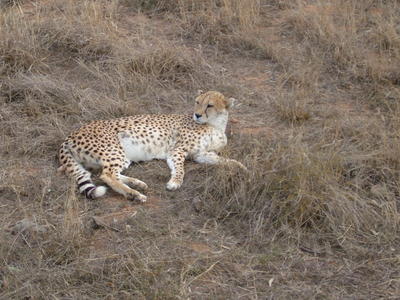
Although we did not see any cheetahs in the wild we did get very up close and personal at a breeding center just outside the park
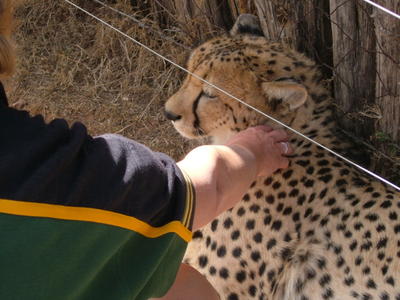
Carol goes for the grab it around the neck approach.
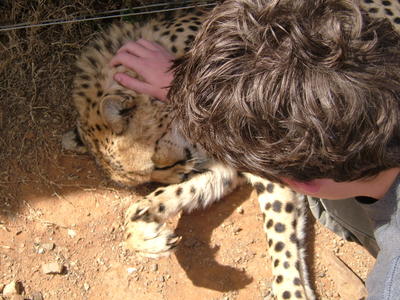
Luke goes for the wait until its asleep approach.
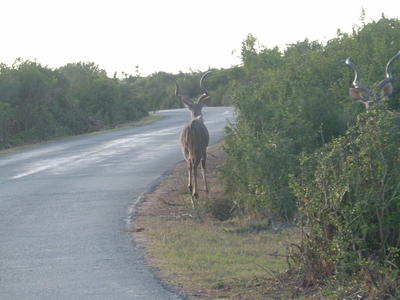

Just two of Addos hundreds of warthogs
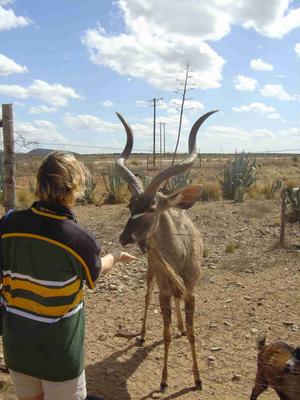 We stopped for lunch outside the park and they had a pet Kudu, Carol had to feed it.
We stopped for lunch outside the park and they had a pet Kudu, Carol had to feed it.
Below, Luke and his girlfriend Aimee really took to this safaring they were so excited at seeing the animals
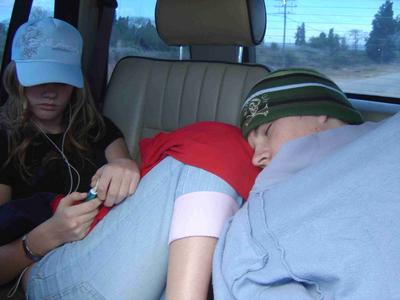
Due to plans to ambitiously expand Addo Elephant National Park, the future of the Addo elephants looks bright. The population can continue to grow as the park is enlarged, and may increase to 100 times its original founder size. However, both genetic and behavioural considerations need to be taken into account in management plans, in order to ensure the secure future of this fascinating elephant population.
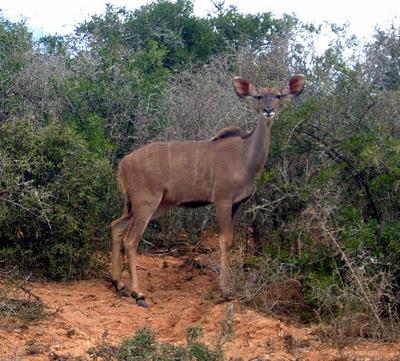 We did not see any lions in the park on this trip, but we did see their food, like this female Kudu, above. Sadly these lovely animals are food and there was evidence of lions being very close to where we were, as can be seen below. We found this early one morning and must have disturbed the lions during their feast.
We did not see any lions in the park on this trip, but we did see their food, like this female Kudu, above. Sadly these lovely animals are food and there was evidence of lions being very close to where we were, as can be seen below. We found this early one morning and must have disturbed the lions during their feast. 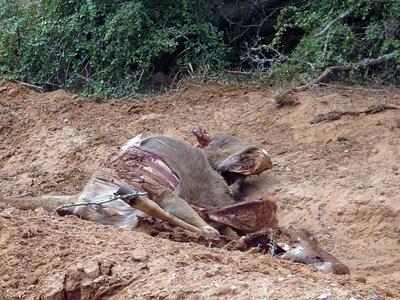
And then later the same nmorning we returned to find that clearly lions or some other animal had finished off everything.
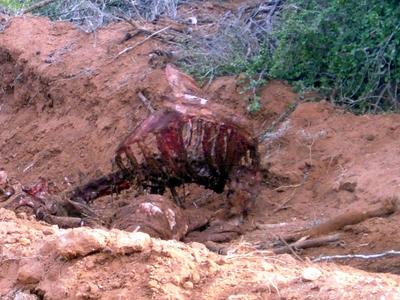
We stopped at the Addo Valley Retreat, which was basic, some would call it living in sheds, but everything was clean and tidy, there was everything you needed included good hot showers, and the staff were very helpful.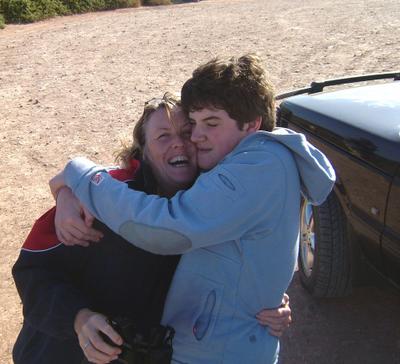
On the way back we stopped at the Elephant Sanctuary (phone 044 534 8145 to make a reservation) at Craigs just outside Plettenberg Bay. This is billed as a life changing experience and it was. Getting to handle elephants and lead them by their trunks through the forest was one hell of an experience. We would recommend this to anyone, its not touristy at all and very educational, cost R195 per person. No cheap by South African standards but worth twice as much.
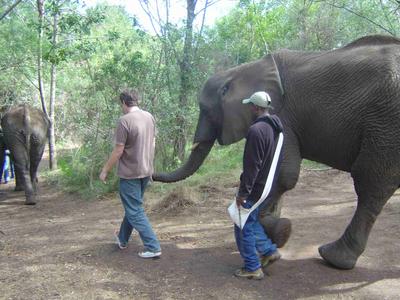
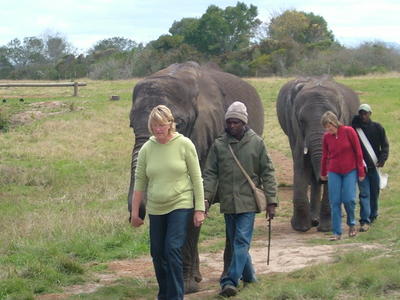
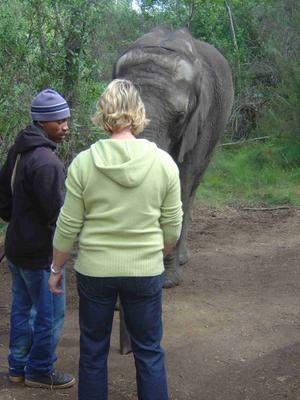
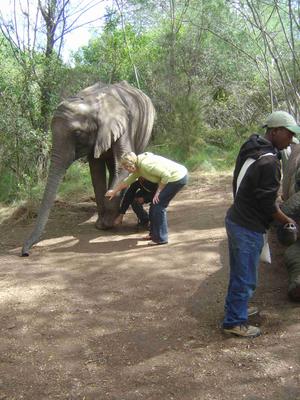
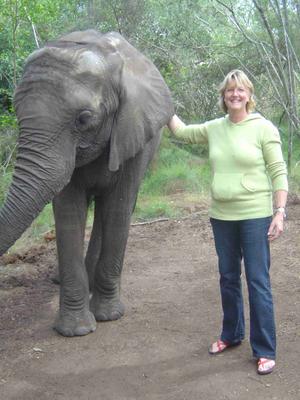
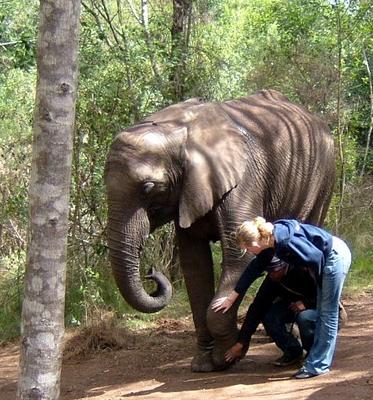
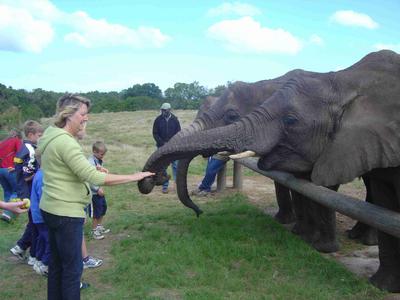
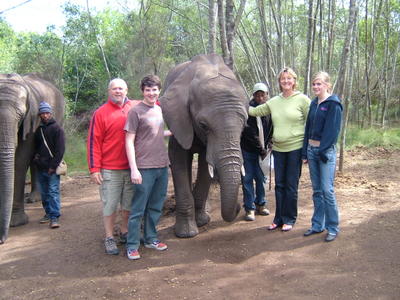
After the Elephant Sanctuary we drove to Montagu to spend a few days with Lukes girlfirends parents, at the Montagu Springs. On one day Luke and Aimee went quad biking across a local farm which looked great fun and they got to meet baby ostrich. The quad biking cost R100 for an hour.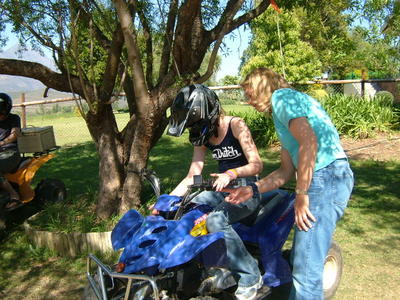
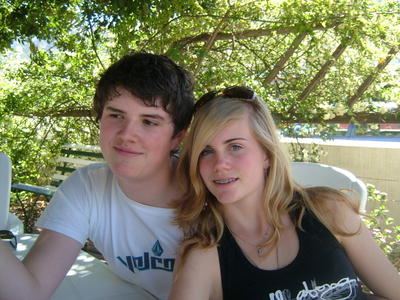

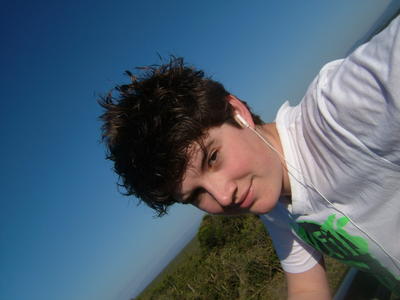




0 Comments:
Post a Comment
<< Home